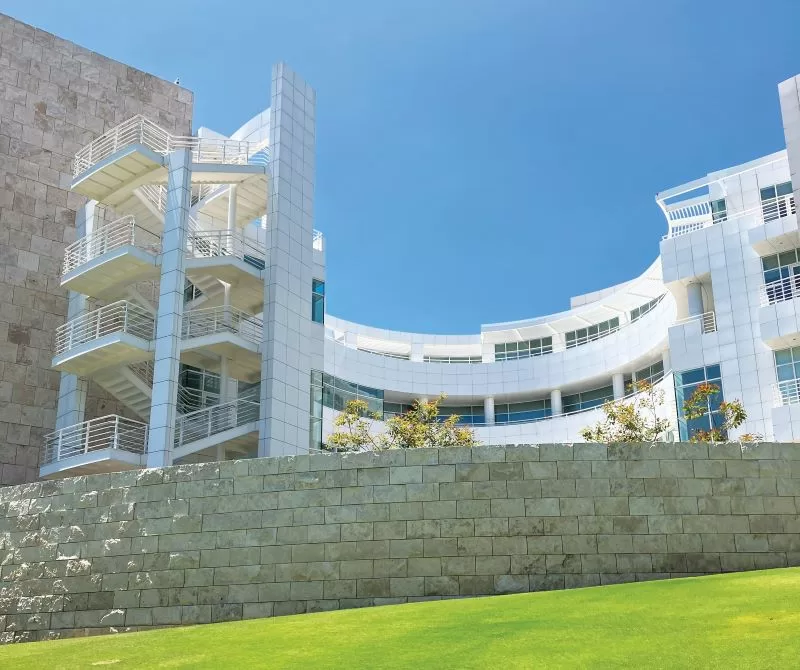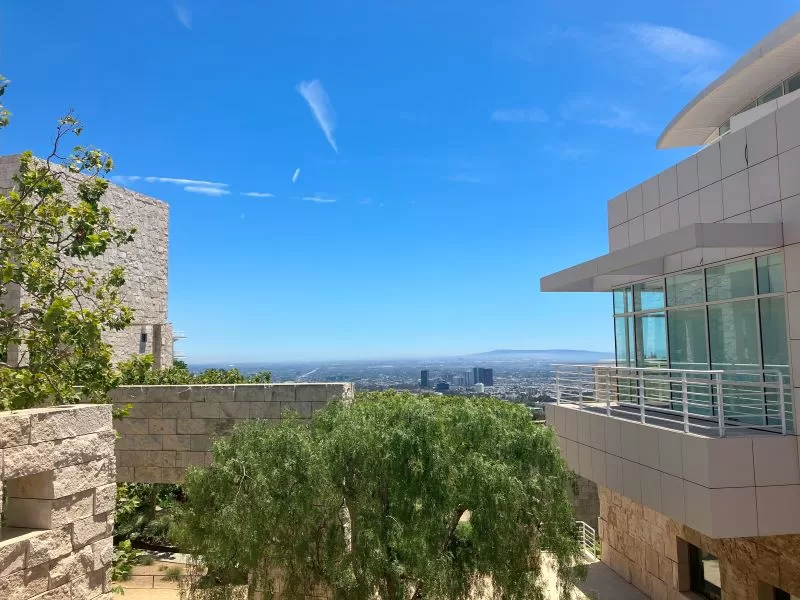
Up on a hill, overlooking the sprawling City of Angels, sits a castle.
Not a medieval castle of times old with jousting and mead, but the palatial museum that is home to artwork collected by J. Paul Getty. The late billionaire’s oil fortune was reinvested into the Getty Foundation, which according to the organization’s website, “fulfills the philanthropic mission of the Getty Trust by supporting individuals and institutions committed to advancing the greater understanding and preservation of the visual arts in Los Angeles and throughout the world.”
The Getty museum began in Getty’s Pacific Palisades home in 1954. After expanding the house with a designated museum wing, Getty eventually built a Roman Villa replica on his land in the 1970s to better house his collection. Ultimately, the Getty collection grew beyond the constraints of that facility, and the Getty Center was built with the purpose of housing the vast array of work. The Getty Center hosts a diverse collection including fine and decorative art from Europe, paintings, drawings, manuscripts, and more. The site also boasts world-class architecture and gardens. The Getty Villa still sits in Pacific Palisades, overlooking the Pacific Ocean. It is home to an extensive collection of Greek and Roman antiquities, and features exhibitions of artwork from the ancient world.

Sitting atop the Santa Monica Mountains at 900 feet above sea level, the Getty Center’s location offers sweeping vistas of Los Angeles County, from the San Gabriel and San Bernardino Mountains in the east to the Pacific Ocean in the west. Due to its location and priceless contents, the museum has special fire prevention measures in place to protect the works contained within. These measures include fire-resistant poverty weed planted around the property, annual goat-powered brush clearance, and a specially-designed sprinkler system inside the museum. The site is also designed to withstand Southern California’s other common natural disaster: earthquakes. The deadly 1994 Northridge earthquake hit during the construction of the Getty Center, resulting in preventative retrofitting for future disasters.
Among the Getty Center’s current installations is local Los Angeles-based artist Mercedes Dorame’s Woshaa’axre Yaang’aro (Looking Back), an observance of Pimugna, or Catalina Island, and its long-time inhabitants, the Tongva people. Dorame’s project reflects on the view of the island from the Getty Center, and features giant abalone sculptures—an endangered mollusk and a significant resource for the Tongva. The work is the first in the site’s new “Rotunda Commission,” a series featuring art inspired by aspects of the Getty Center itself: the collection, architecture, and site.
The Getty Center features a particularly spectacular collection of European art from the Impressionist era and surrounding decades, the crown jewel of which is Vincent Van Gogh’s Irises (1889), one in a series of paintings created at the Saint Paul-de-Mausole asylum in Saint-Rémy-de-Provence, France in the last year before the artist’s death. Other standout pieces include Claude Monet’s Wheatstacks, Snow Effect, Morning (1891), one of a series by the artist depicting the effects of light and season on a single subject; Paul Cezanne’s The Eternal Feminine (1877;, Edouard Manet’s The Rue Mosnier with Flags (1878); Pierre-Auguste Renoir’s La Promenade (1870); and Edgar Degas’ After the Bath (1895).
The Getty Center offers free admission (advance reservations are required), but does charge a fee for parking. The museum can also be accessed by public transit. Guests are conveyed by tram from the parking entry area to the actual museum complex itself, which gives the impression of being transported somewhere far away, and even a little magical. Several dining options are available on site including a sit-down restaurant and a fast-casual cafe, as well as a coffee cart. The extensive gardens and terraces encourage exploration and invite visitors to linger and enjoy the incredible views. The museum also boasts an extensive gift shop featuring books, postcards, children’s toys, silk scarves, and jewelry.
The Getty Center offers more than enough delights to keep guests entertained for a whole day. It’s a good idea to come prepared for a long day of walking, and a lot of stairs. Wheelchairs are available for disabled visitors, and the center provides sun umbrellas for use in the garden. For more information on the Getty Center, including current exhibitions, docent-led tours, and gallery talks, visit www.getty.edu




